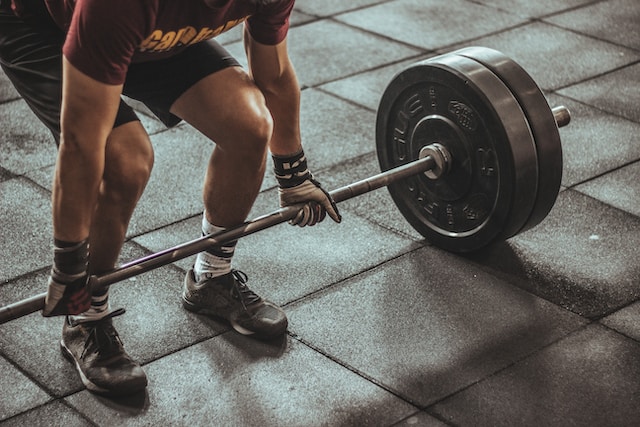Unleash the full potential of your workouts! The age-old debate of whether to do calisthenics before or after weights has intrigued fitness enthusiasts for years. When it comes to maximizing gains and optimizing your workout routine, understanding the benefits and drawbacks of each approach is crucial. In this article, we will explore the world of calisthenics and weightlifting, diving into their unique advantages and discussing the optimal sequence for achieving your fitness goals.
Understanding Calisthenics and Weightlifting
Calisthenics, characterized by bodyweight movements, offers increased body control and functional strength. This form of exercise relies on the resistance of one’s own body to perform various movements such as push-ups, pull-ups, squats, and planks. One of the key advantages of calisthenics is its minimal equipment requirement, making it accessible to individuals who prefer to work out in the comfort of their own homes or in outdoor environments. Additionally, calisthenics enhances flexibility and promotes overall body coordination and control.
On the other hand, weightlifting is renowned for its ability to build muscle mass and strength. By utilizing external resistance such as dumbbells, barbells, or weight machines, weightlifting allows for precise muscle targeting. It provides progressive overload, enabling individuals to incrementally increase resistance and challenge their muscles to adapt and grow stronger. Weightlifting exercises involve controlled movements with heavy loads, stimulating muscle hypertrophy and enhancing overall muscular strength.
Calisthenics Before Weights: Priming Your Body
The debate on whether to prioritize calisthenics or weightlifting in your workout routine has led to two distinct approaches: calisthenics before weights and weights before calisthenics. Let’s explore the pros and cons of each approach and their impact on your overall workout experience.
Starting your workout with calisthenics allows you to prime your body for the subsequent exercises. Priming involves preparing your body for physical exertion by engaging in specific exercises or movements that activate and warm up major muscle groups. By performing calisthenics exercises at the beginning, you activate and warm up these major muscle groups, promoting blood flow and increasing your body’s core temperature. This activation prepares your muscles for the subsequent weightlifting exercises, enabling them to perform at their best and reducing the risk of injury. Moreover, starting with calisthenics enhances mobility and flexibility, improving joint mobility and increasing the range of motion during your workout. Many fitness experts and success stories support the calisthenics-first approach, highlighting its effectiveness in activating the entire body and mentally preparing individuals for the workout ahead.
Imagine this: Before hitting the weights, you engage in a dynamic calisthenics routine that targets your entire body. As you perform a series of bodyweight movements, you can feel your muscles awakening, blood pumping, and body temperature rising. By the time you transition to weightlifting, you notice a remarkable difference in your overall performance and range of motion. The calisthenics warm-up has effectively primed your body, allowing you to lift with confidence and push yourself further towards your fitness goals.
Weights Before Calisthenics: Fatigue Adaptation
On the contrary, starting with weightlifting taps into the concept of fatigue adaptation. This concept involves the body’s ability to adapt and improve its resistance to fatigue over time. By beginning your workout with weightlifting exercises, when your energy levels are at their peak, you can maximize muscle recruitment and power output. Heavy weightlifting exercises, such as bench presses, deadlifts, or squats, require short bursts of intense effort and heavily rely on your energy stores. Starting with weightlifting allows you to capitalize on optimal energy levels, enabling you to lift heavier weights and achieve greater power output. The weights-first approach has gained support from fitness experts and real-life examples, with many individuals reporting improved strength, muscle definition, and overall performance in both calisthenics and weightlifting exercises.
Picture this: You enter the gym and head straight to the weightlifting area. You load up the barbell, ready to perform a challenging set of squats. Your muscles are fresh, and your energy levels are high. As you execute each rep with proper form and intensity, you can feel your muscles working hard and adapting to the resistance. After completing your weightlifting routine, you transition to calisthenics exercises. Surprisingly, the fatigue from weightlifting has primed your muscles for the bodyweight movements. Your muscles are already activated, and you can perform calisthenics exercises with greater stability and control.
Finding the Middle Ground: Alternating and Combining Exercises
While the debate between calisthenics before weights and weights before calisthenics continues, there is a middle ground that offers the best of both worlds. Incorporating a hybrid approach that alternates and combines calisthenics and weightlifting exercises can break the monotony of your workouts and provide a well-rounded training stimulus. By alternating between calisthenics and weights, you introduce variety and novelty into your routine, challenging your muscles in different ways and promoting continual growth and improvement. Alternating exercises also prevents boredom and keeps your motivation high.
Additionally, combining calisthenics and weightlifting through strategies like supersetting and circuit training can provide an excellent training stimulus. Supersetting involves pairing a calisthenics exercise with a weightlifting set, performing them back-to-back with minimal rest in between. This approach challenges your muscles from different angles and keeps your heart rate elevated for cardiovascular benefits. Circuit training, on the other hand, blends both calisthenics and weightlifting exercises into a seamless routine, targeting different muscle groups and providing a high-intensity, full-body workout.
Many individuals have found great success with a hybrid approach, reporting improved strength, muscle definition, and functional fitness. The versatility and adaptability of alternating and combining exercises have allowed them to customize their workouts, making them more enjoyable and effective in reaching their fitness goals.
Conclusion
The optimal sequence of calisthenics and weightlifting in your workout routine depends on your preferences, goals, and body’s response to different training stimuli. It is essential to understand the benefits and drawbacks of each approach and experiment to find what works best for you. Whether you choose to start with calisthenics to prime your body, begin with weightlifting to capitalize on fatigue adaptation, or explore a hybrid approach that combines both modalities, consistency and dedication are key. Ultimately, the success of your fitness journey lies in finding a routine that challenges you, keeps you motivated, and allows for continual progress. So, unleash your full potential by incorporating calisthenics and weightlifting into your workouts and embark on a path to a stronger, healthier, and more resilient version of yourself.






